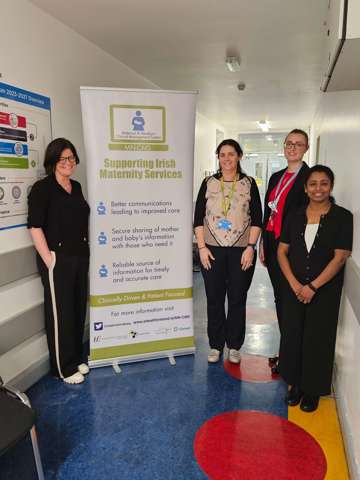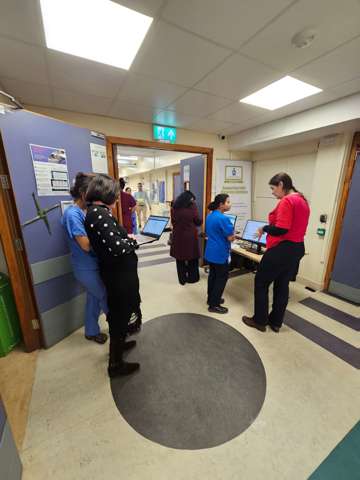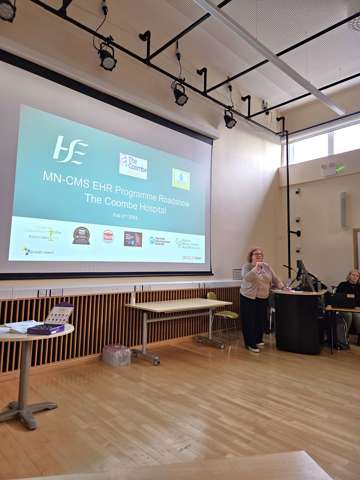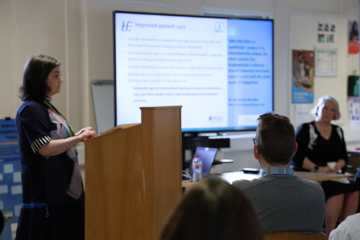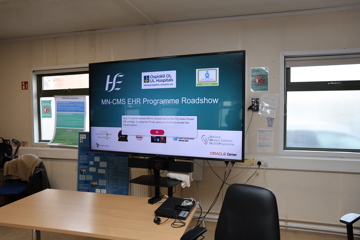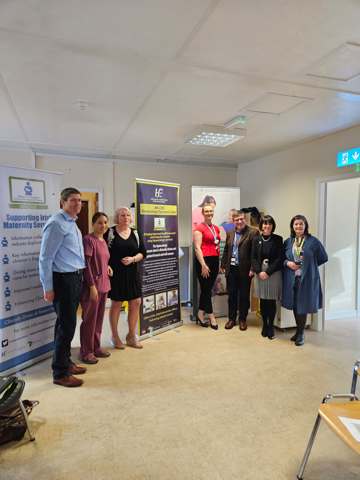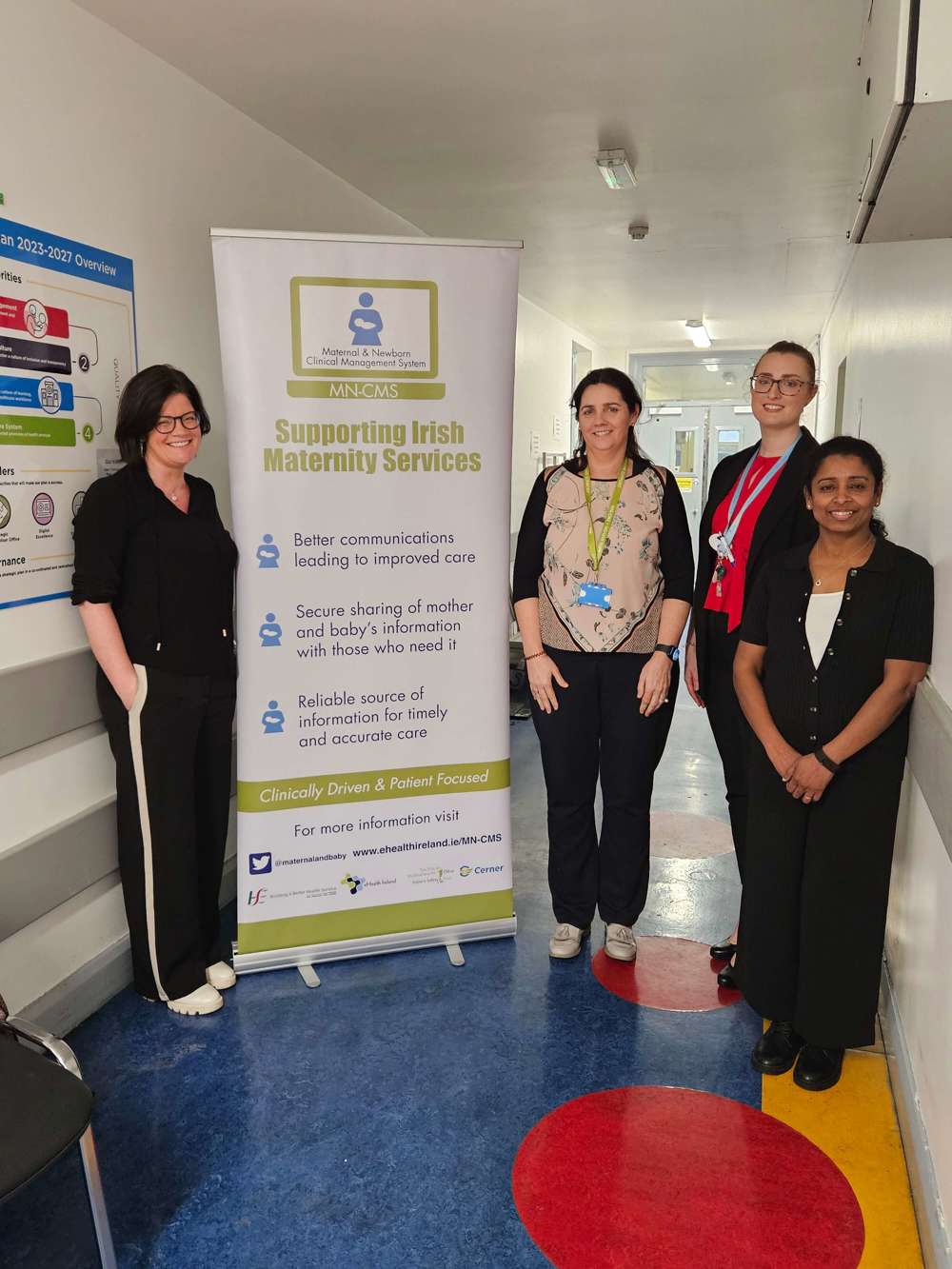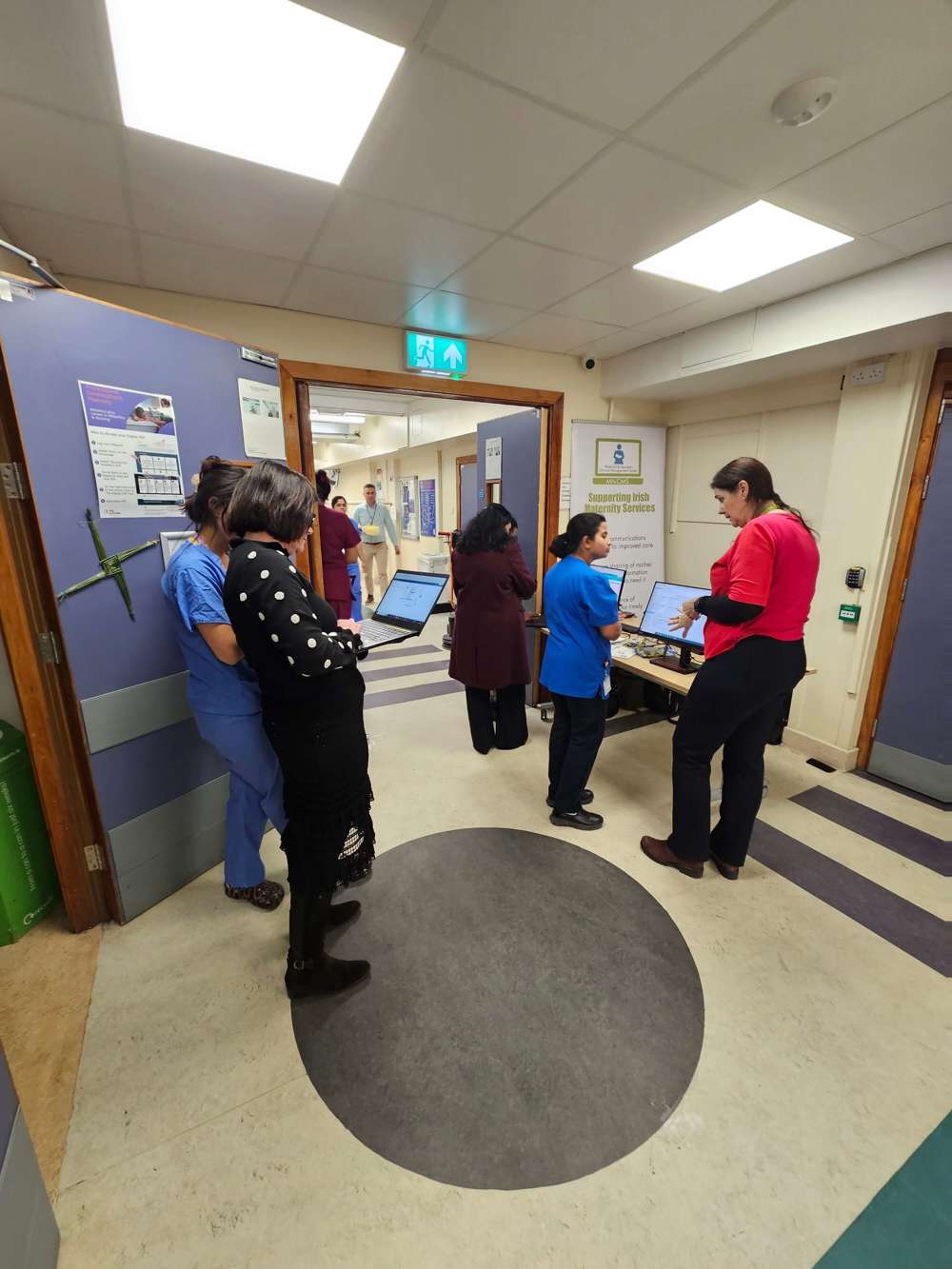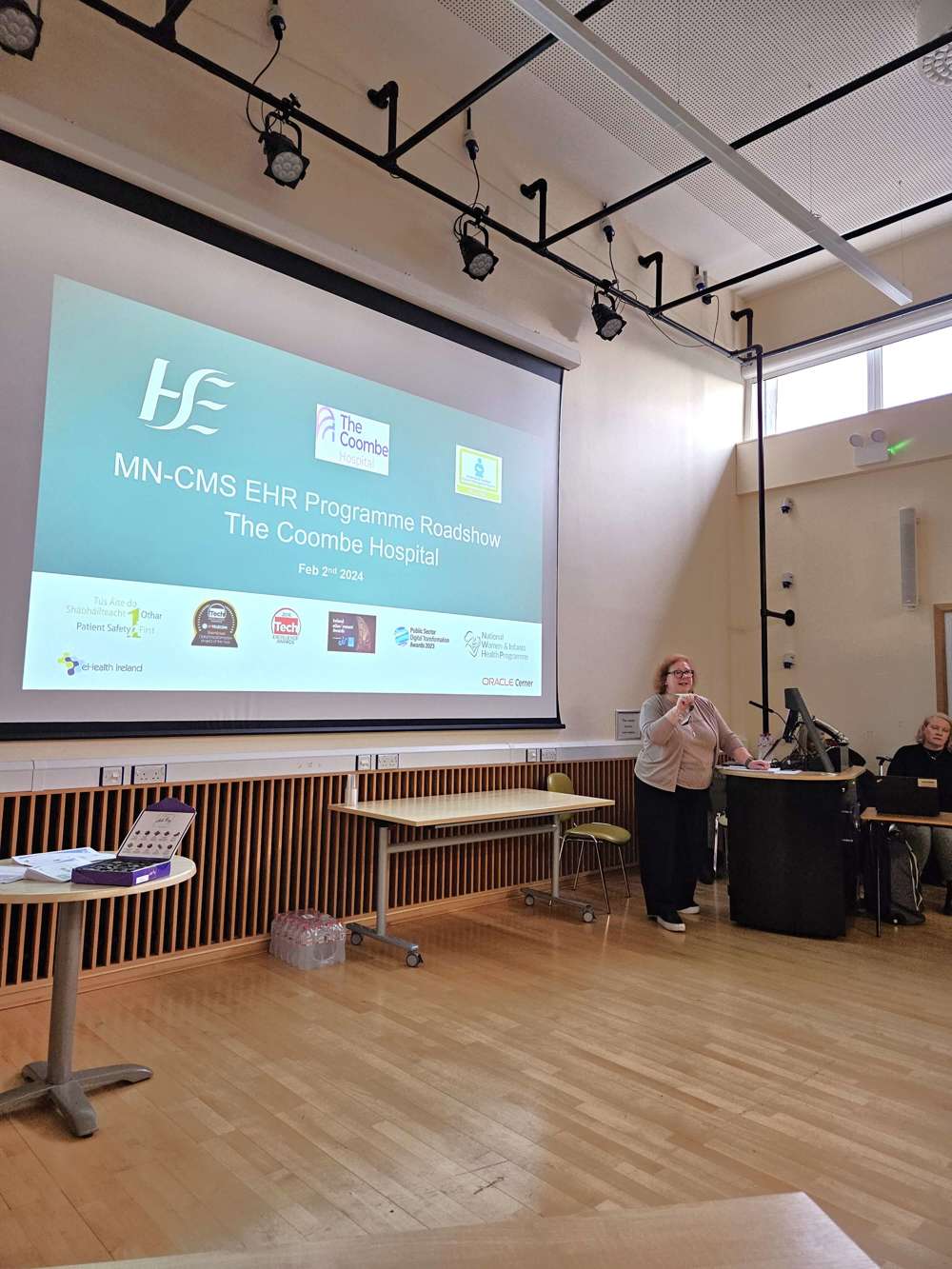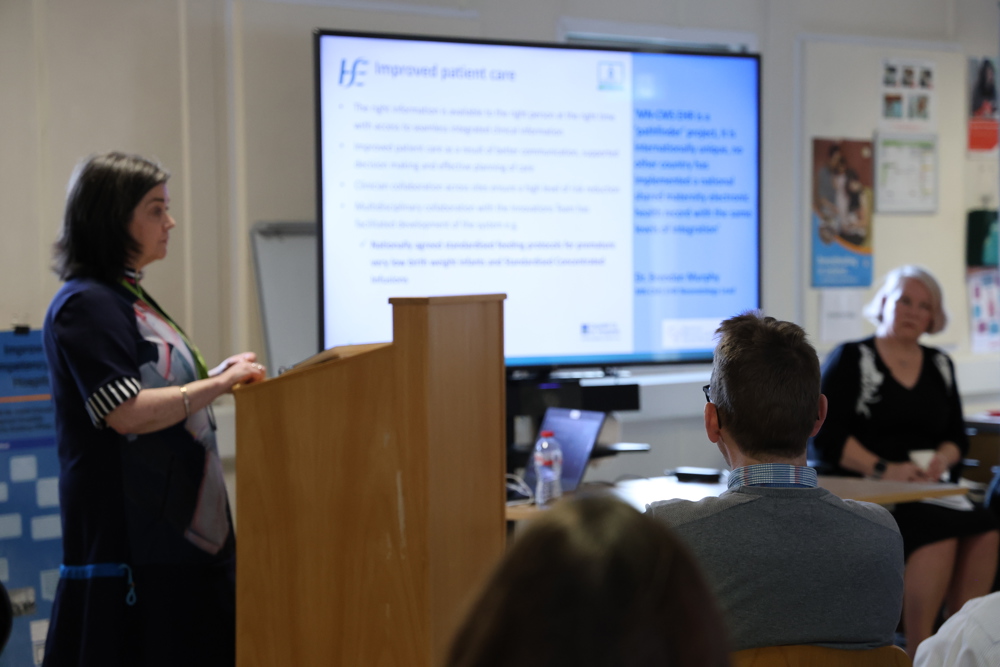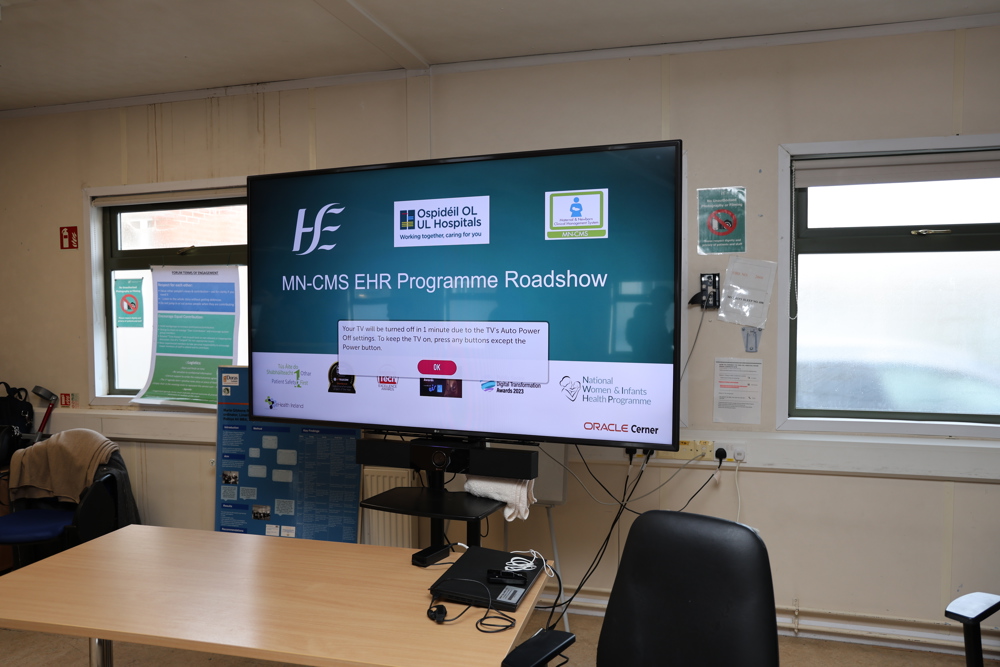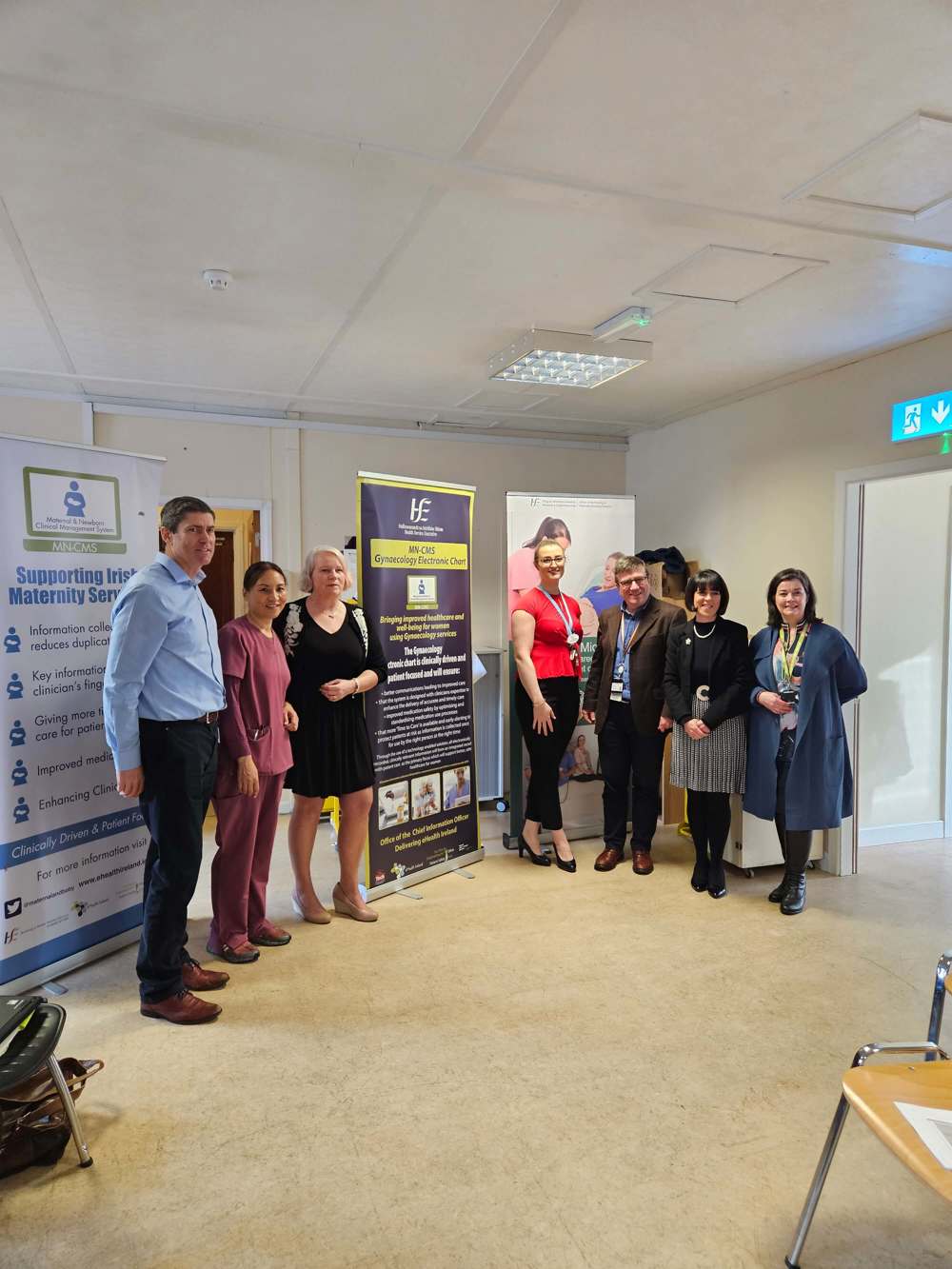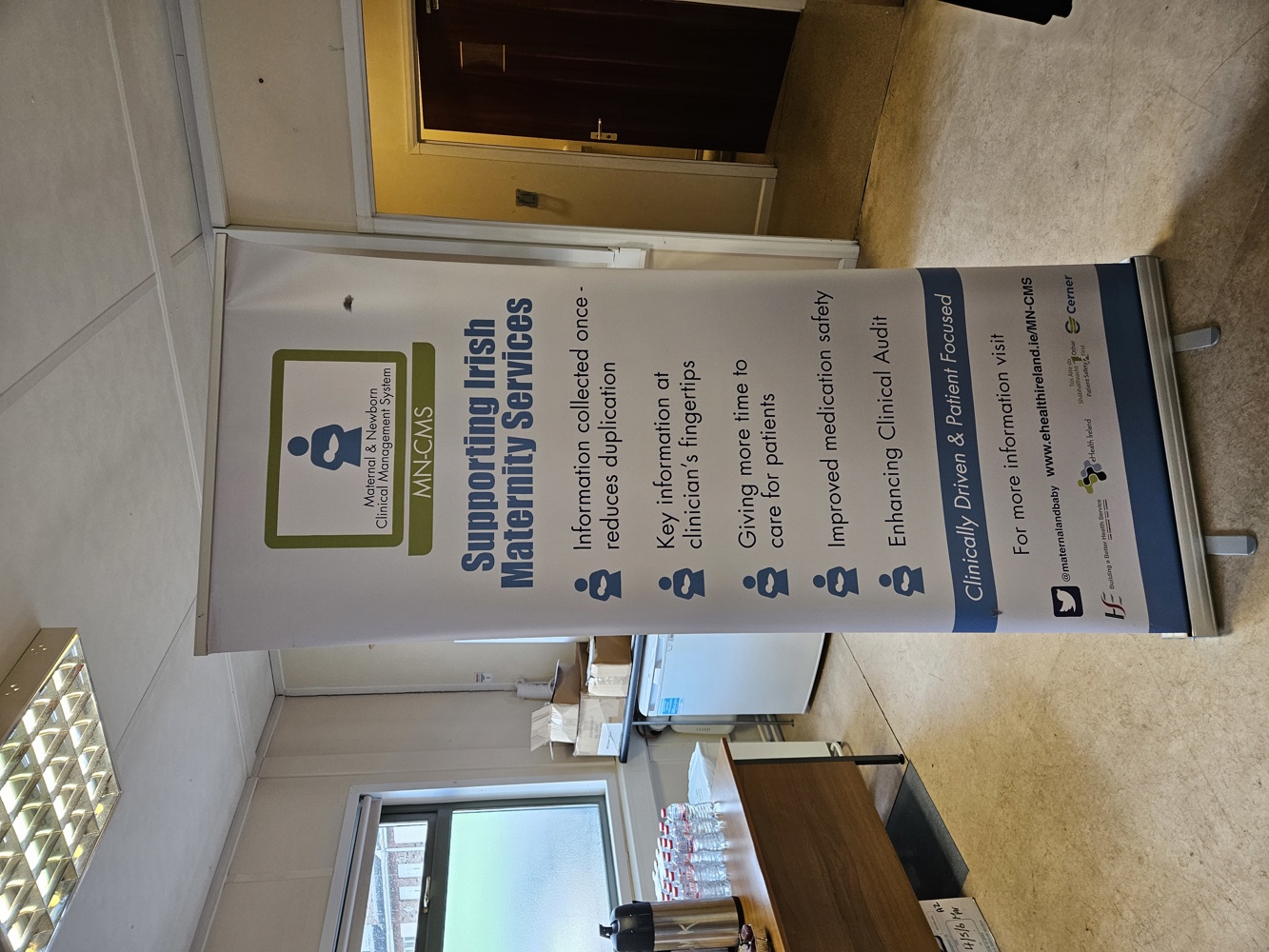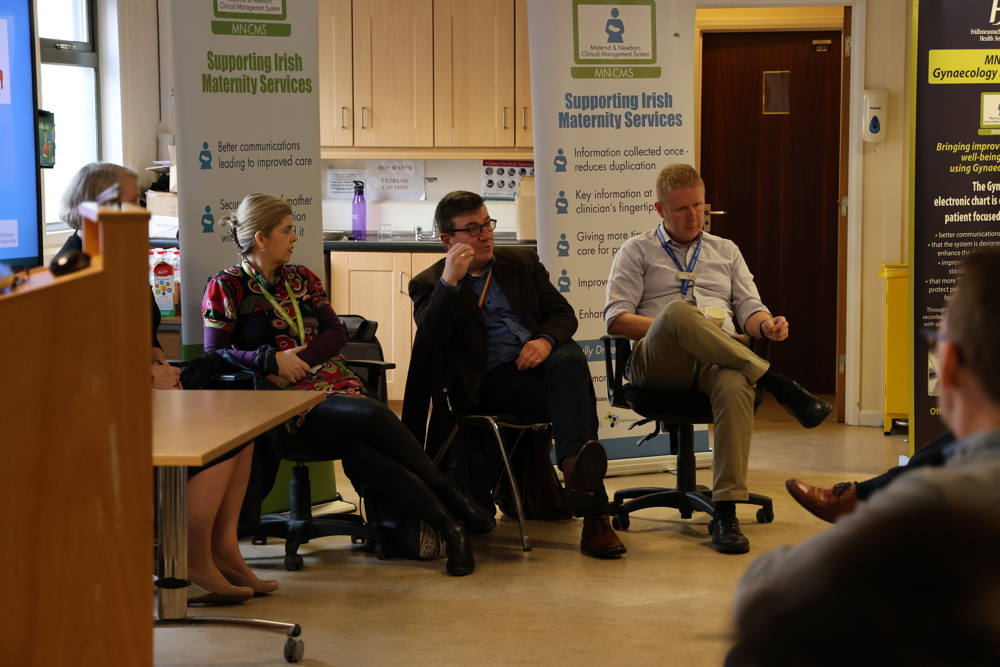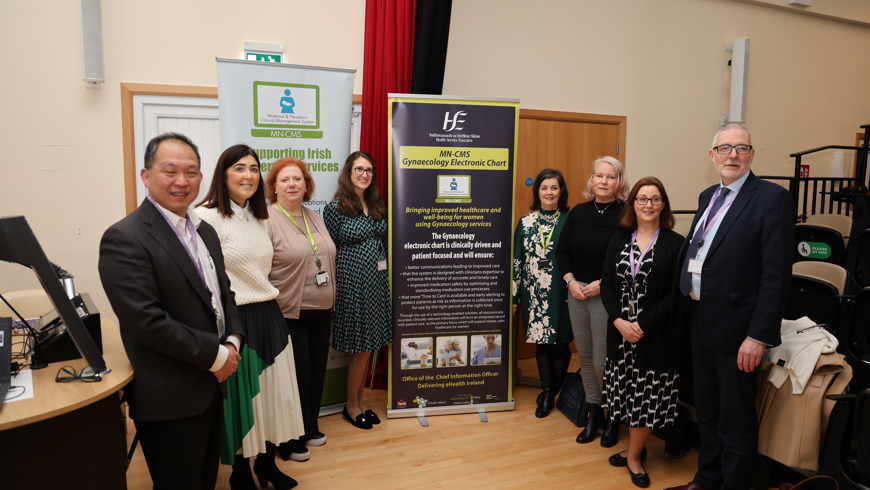
MN-CMS EHR Programme Phase 2 Kick-off
Introduction
The Maternal & Newborn Clinical Management System (MN-CMS) is the Electronic Health Record (EHR) for all Women and Infants in Maternity, Gynaecology and Neonatal Services in Ireland. When the programme is complete this electronic health record will be available in 19 maternity hospitals in Ireland including The Health Service Executive (HSE) and Voluntary Hospitals. The MN-CMS EHR will allow all information to be shared with relevant providers of care as and when required.
Following the successful implementation of Phase 1 of the MN-CMS EHR for Obstetric, Neonatal & Gynaecology patients at CUMH, UHK, The Rotunda and NMH the MN-CMS EHR Programme team is delighted to announce the commencement of Phase 2 with Roadshows at The Coombe Hospital and University Maternity Hospital, Limerick (UMHL).
Roadshow
The Roadshows were very well attended by enthusiastic staff that were curious and engaged throughout the sessions, a great start to Phase 2.
The Roadshows included:
Presentation of an overview of MN-CMS functionality and benefits of the system
Demonstrations of the system to relevant stakeholders
Pop-up sessions at strategically appointed locations to enable MN-CMS EHR project team members to share information and answer the questions of the future users of the system as well as sharing insights and knowledge with staff
Collaborative engagements between MN-CMS EHR Workstream Leads and MN-CMS EHR senior management team with site subject matter experts and planning for future collaboration
Distribution of newsletter and signposting to where further information is available
Next steps
Phase 2
The objective of Phase 2 is to facilitate the project rollout to empower the transformation of healthcare delivery, enable the key benefits of the system to be realised and support the provision of safe, effective and timely care for women and infants in the Coombe and UMHL:
Improving patient experience and care through better communication, legibility and access to the chart by relevant providers of care as and when required
Enhancing access to patient information
Supported decision-making and effective planning of care
Strengthening patient safety and data driven care
Effective and efficient recording of care reflecting best standards in documentation
Enhanced clinical audit and research with better quality data and system functionality
Informed Business Intelligence and reporting functionality for local and national management decisions
Quantitative savings through changes in work practices and use of resources

